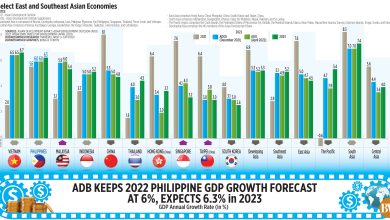Steady growth in PHL working age population could be a boon or bane, says POPCOM

A STEADY growth in the Philippine’s working-age population as indicated in latest government data could either be a boon or bane for the country, according to the Commission on Population and Development (POPCOM).
“The high fertility levels of the last two decades were projected to create a bulge of young people entering the workforce up to 2035,” POPCOM Executive Director Juan A. Perez said in a statement on Sunday, citing 2020 population data from the Philippine Statistics Authority (PSA).
“This could prove to be a boon for the country if they become effective workers, or a lost generation if they are not employed or are underemployed, which will create a socioeconomic burden for a smaller, employed population,” he said.
PSA data showed the working-age population, covering those 15 to 64 years old, makes up 63.9% of Filipinos, up from 63.3% in 2015 and 59.1% in 2000.
Women of reproductive age, or those 15 to 49 years old, were also at a record-high in 2020 at 27.8 million from 26 million in 2015.
Mr. Perez said this is a welcome “opportunity for more Filipinas to further augment the country’s potential number of working citizens.”
FAMILY PLANNINGAt the same time, POPCOM estimates that at least nine million women from that age group will require family planning services.
Mr. Perez said the national government has to support the contraceptive needs of 7.6 million women who are currently being served by local governments, as well as anticipate the family planning requirement of the other women in that age group.
POPCOM noted that the latest population data with children aged zero to 4 on the decline “point at the effectiveness” of the country’s family planning program.
The percentage share of Filipino children under five years was down to 10.2% in 2020 from 10.8% in 2015, and 12.6% in 2000. For those under 15, the percentage has also dropped in the last two decades to 30.7% in 2020 from 37% in 2000.
“Meanwhile, the median age of Filipinos also went up to 25.3 years old, from 23.3 years old in 2010, continuing a 30-year trend of increasing median age of Filipinos,” POPCOM said.
Senior citizens or those at least 60 years old comprised 8.5% of the 2020 population, or 9.2 million, up from 5.9% or 4.5 million in 2000.
The Philippines had a total population of over 109 million based on PSA’s 2020 census. — Marifi S. Jara




